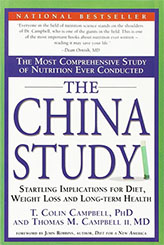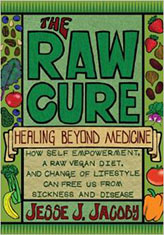
The health and nutritional benefits of eating brown rice.
Rice is an ancient and well loved food, and it is estimated to have been consumed nearly 9000 years ago, originating in Asia. Today rice supplies half of the daily calories for half of the worlds population, and it comes as no surprise that the worlds largest producers are China, India and Indonesia.
Although it may come as a surprise to know that there are over 8,000 varieties of rice, however, rice commonly gets narrowed down to three types, short, medium and long grain rice. Short grain has the greatest percentage of starch and as a result tends to be the stickiest, long grain tends to remain separated after cooking, while medium grain sits somewhere between the two types.
Brown rice differs from white rice in that it has only the outermost layer removed, known as the hull. This form of processing has the least damaging effect on the overall available nutrients. Whereas the process of milling and polishing the grain to turn the brown rice into white rice destroys many of the nutrients including 90% of vitamin B6, 68% of the vitamin B3, 60% of the iron, 80% of vitamin B1, half of the phosphorus, half of the manganese and all the dietary fiber and essential fatty acids.
Brown rice is a concentrated form of fiber and this type of whole grain has been shown in studies to help women lose weight. In addition the studies show that those people that consumed their dietary fiber in the form of whole grains were 49% less likely to gain weight compared with those that ate refined foods. This suggests that brown rice and other forms of whole grains, when eaten on a daily basis, can help to prevent obesity and thereby help prevent the diseases associated with obesity.
Brown rice is jam packed with manganese and this mineral helps to produce energy from the proteins and carbohydrates that you consume. Manganese also protects against damage to the cells from the free radicals produced during energy production.
The oil found in brown rice has been found to lower LDL (bad) cholesterol. Additionally, daily consumption of brown rice has been shown to slow the progression of atherosclerosis, which is plaque that builds up and contributes to narrowing of the vessels. This narrowing can lead to a whole array of cardiovascular conditions such a heart disease, heart attack, stroke and high blood pressure.
Brown rice is known to benefit colon health by reducing the time the cancer causing substances spend in contact with colon cells, this is due to the high dietary fiber content. In addition brown rice is also a good source of selenium, which has shown to markedly reduce the risk of colon cancer, induce DNA repair and inhibit the proliferation of cancer cells.
The phytonutrients found in brown rice particularly the lignans are thought to offer some protection against hormone dependant cancers, including breast cancer. These phytonutrients also have a positive and beneficial effect on reducing heart disease.
Increasing your daily intake of whole grains, including brown rice can significantly lower your risk of type 2 diabetes, this is because the whole grains help to promote a healthy blood sugar control.
Nutrients found in brown rice compared to white rice.

A closer look at some of the nutrients and their benefits to your health.
Manganese - Mineral
- Supports the formation of healthy bones through absorption of calcium
- Supports collagen production
- Helps with the control of blood sugar
- Contributes to the prevention of oxygen related damage and damage from ultra violet (UV) light
- Antioxidant, fights free radical damage. Diets low in manganese have been linked to skin problems and asthma
- Aids proper functioning of the thyroid gland
- Promotes metabolism of fats and carbohydrates.
Magnesium - Mineral
- Helps protein synthesis
- Supports the nervous system
- Improves cellular metabolism
- Regulates heart rhythm
- Reduces the risk of osteoporosis
- Reduces eclamptic seizures
- Helps with muscle relaxation
- Assists with bone and teeth formation
- Regulates the body's use of calcium and other minerals
- Helps maintain structural health of cell membranes
- Reduces the risk of type 2 diabetes
- Reduces the symptoms of asthma
Phosphorus - Mineral
- Maintains healthy cell function
- Helps in maintaining healthy strong bones
- Helps to release energy from food
- Promotes a healthy acid-base balance
- Helps to facilitate digestion
- Helps in the synthesis of protein.
Thiamin - Vitamin B1
- Helps to metabolise carbohydrates, proteins and fats.
- Helps to turn carbohydrates into energy
- Helps maintain a healthy digestion
- Supports the normal function of the nervous system
- Supports the proper functioning of muscles
- Promotes normal brain functioning
- Antioxidant
- Slows down the progression of Alzheimer's
Pyridoxine - Vitamin B6
- Protects the immune system
- Maintains a healthy metabolism
- Helps to produce energy from food
- Promotes healthy hormones
- Maintains healthy cells
- Assists in the absorption of vitamin B12
- Improves neurological function
- Promotes healthy brain development
- Reduces premenstrual symptoms
- Helps to prevent atherosclerosis and heart disease
Niacin - Vitamin B3
- helps to maintain healthy cholesterol levels
- Reduces the risk of cardiovascular disease
- Balances blood sugar levels
- Helps to reduce acne
- Helps to improve skin health
- Supports proper neurological function
- Helps protect against Alzheimer's disease
- Helps to promote joint mobility
- Can help prevent erectile dysfunction
- Helps to improve digestion
Pantothenic acid - Vitamin B5
- Helps to alleviate respiratory conditions
- Reduces stress and anxiety
- Promotes a healthy functioning immune system
- Helps to prevent hair loss
- Aids in the metabolism of lipids and carbohydrates
- Helps to regulate cholesterol levels
- Supports a healthy nervous system
- Promotes a healthy functioning liver
- Helps to reduce inflammation, dryness and pain in the eyes.
Copper - Mineral
- Helps to maintain blood volume
- Produces energy in your cells from carbohydrates
- Supports the building of strong tissue
- Involved in the manufacturing of collagen
- Helps maintain a healthy balance of cholesterol
- Assists in the prevention of premature ageing
- Reduces the symptoms of arthritis
- Maintains eye colour
- Helps regulate the heart beat
- Promotes quick wound healing.



 Articles by subject
Articles by subject Recent Articles
Recent Articles







vBulletin Message